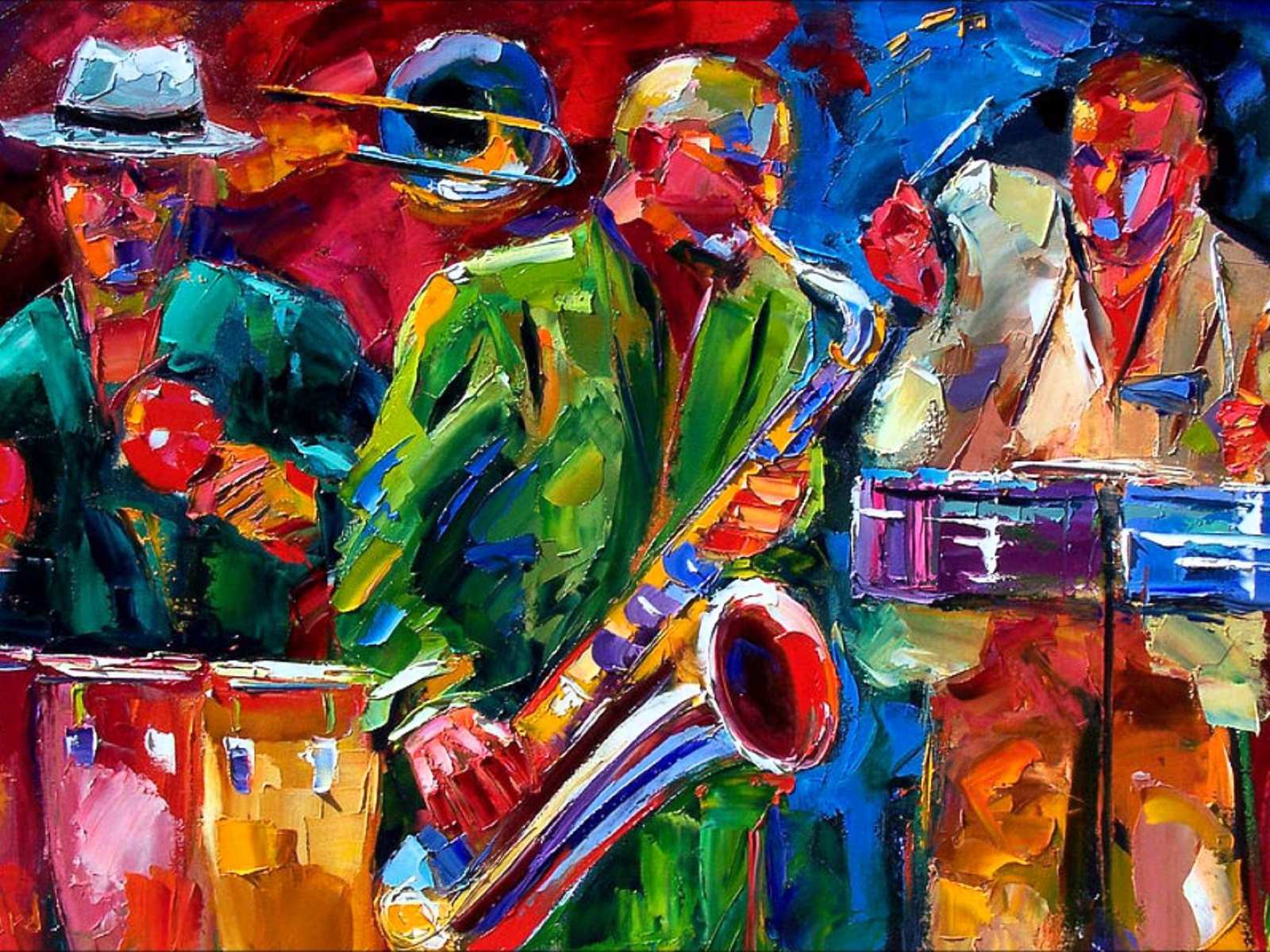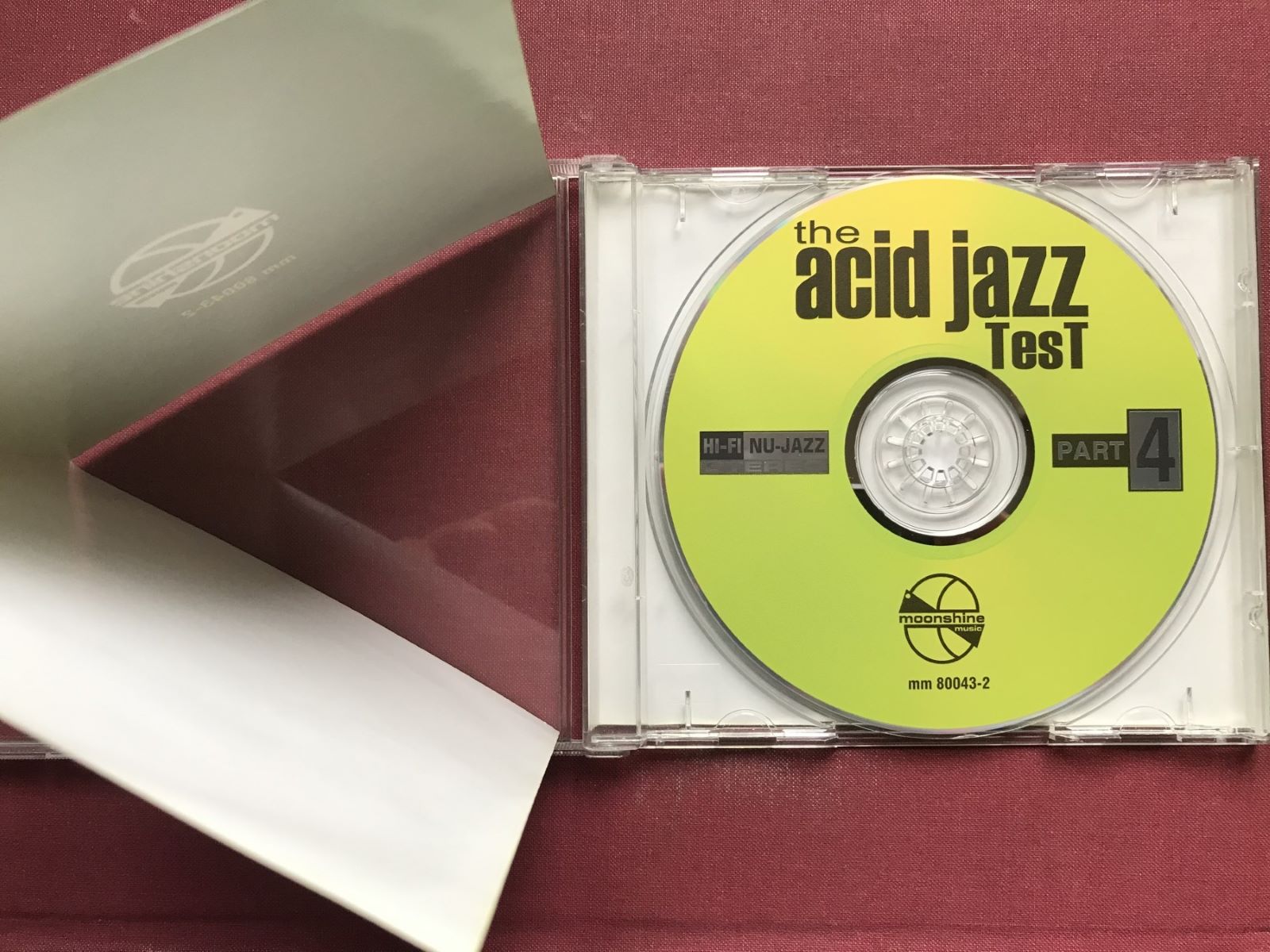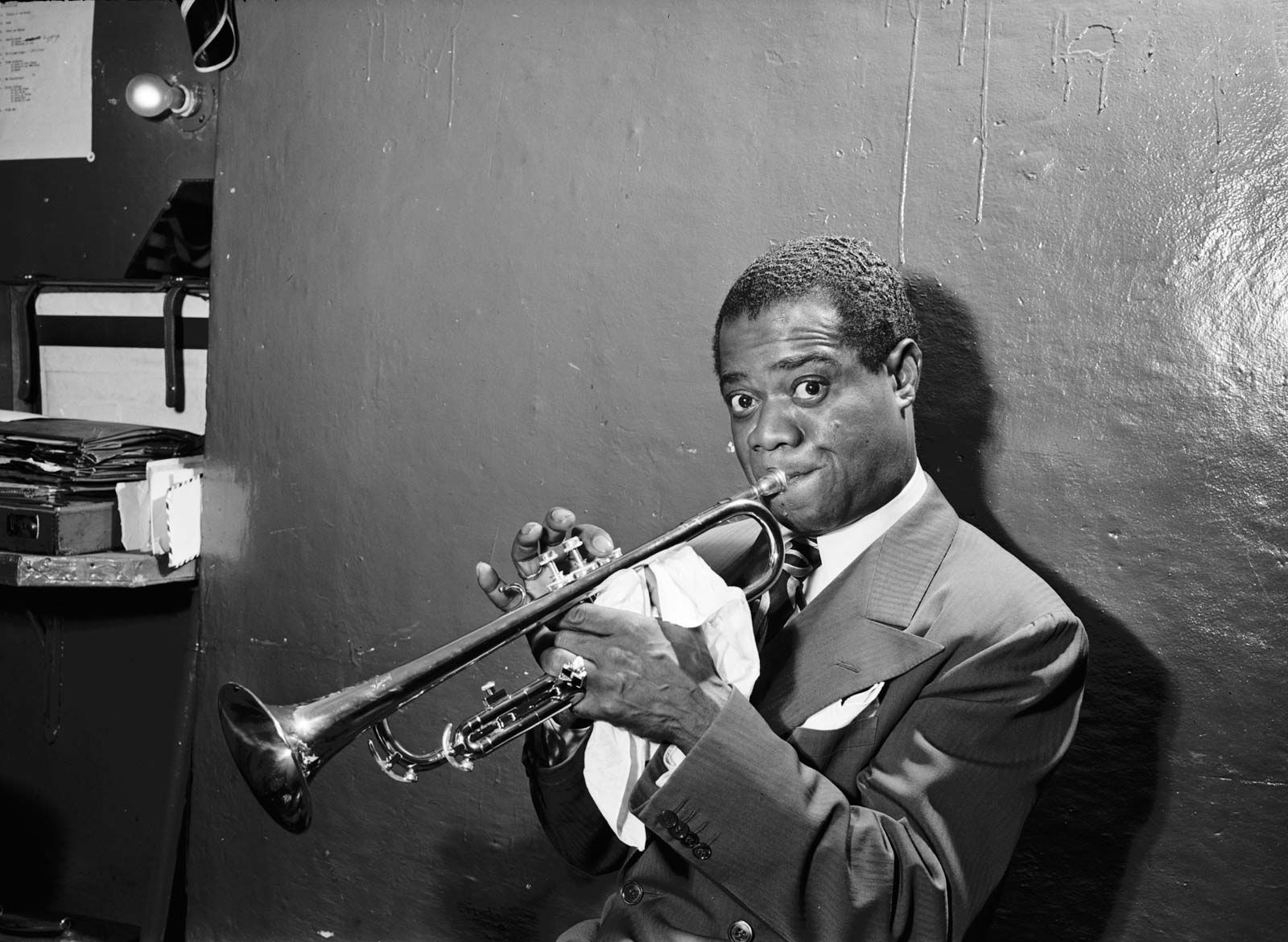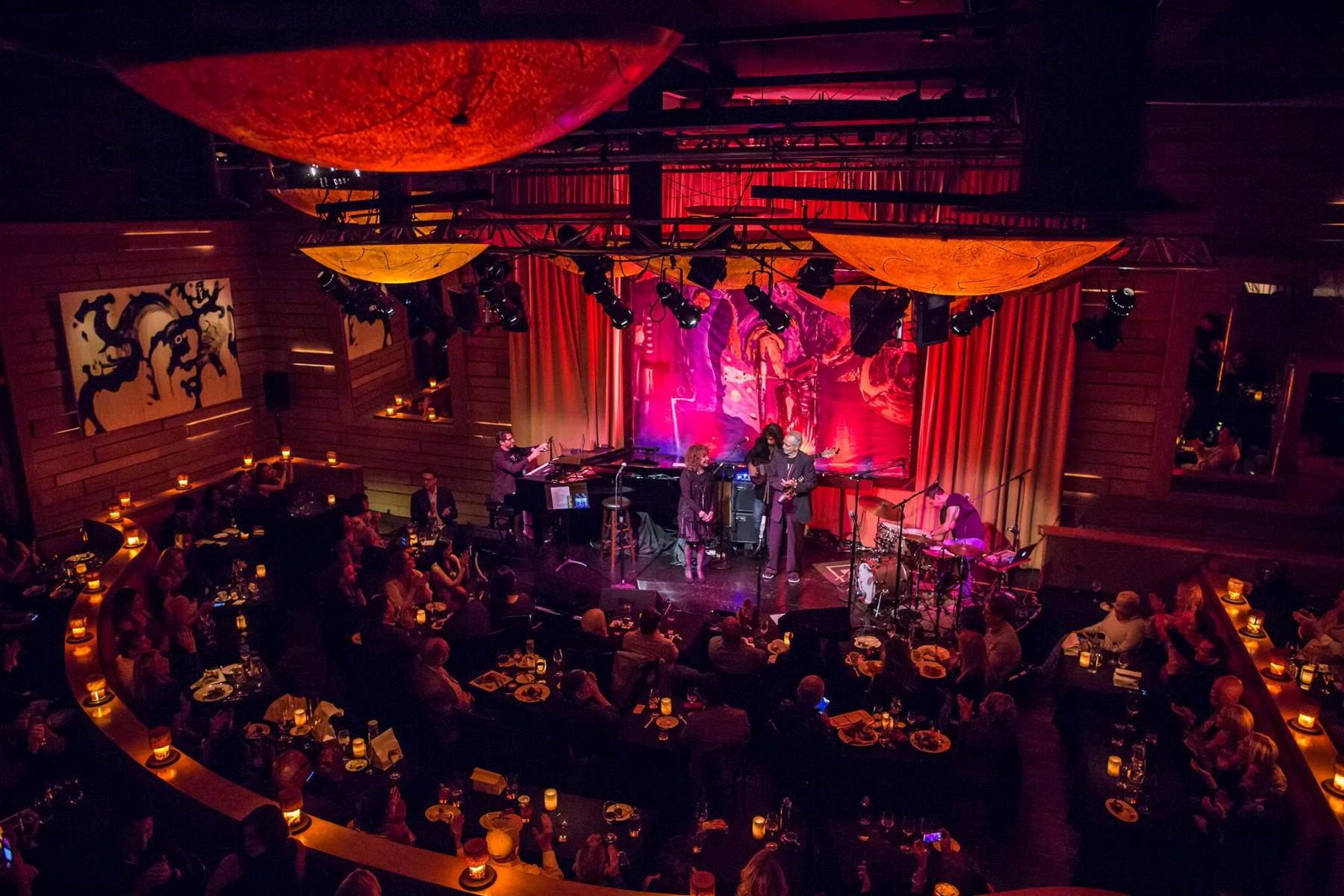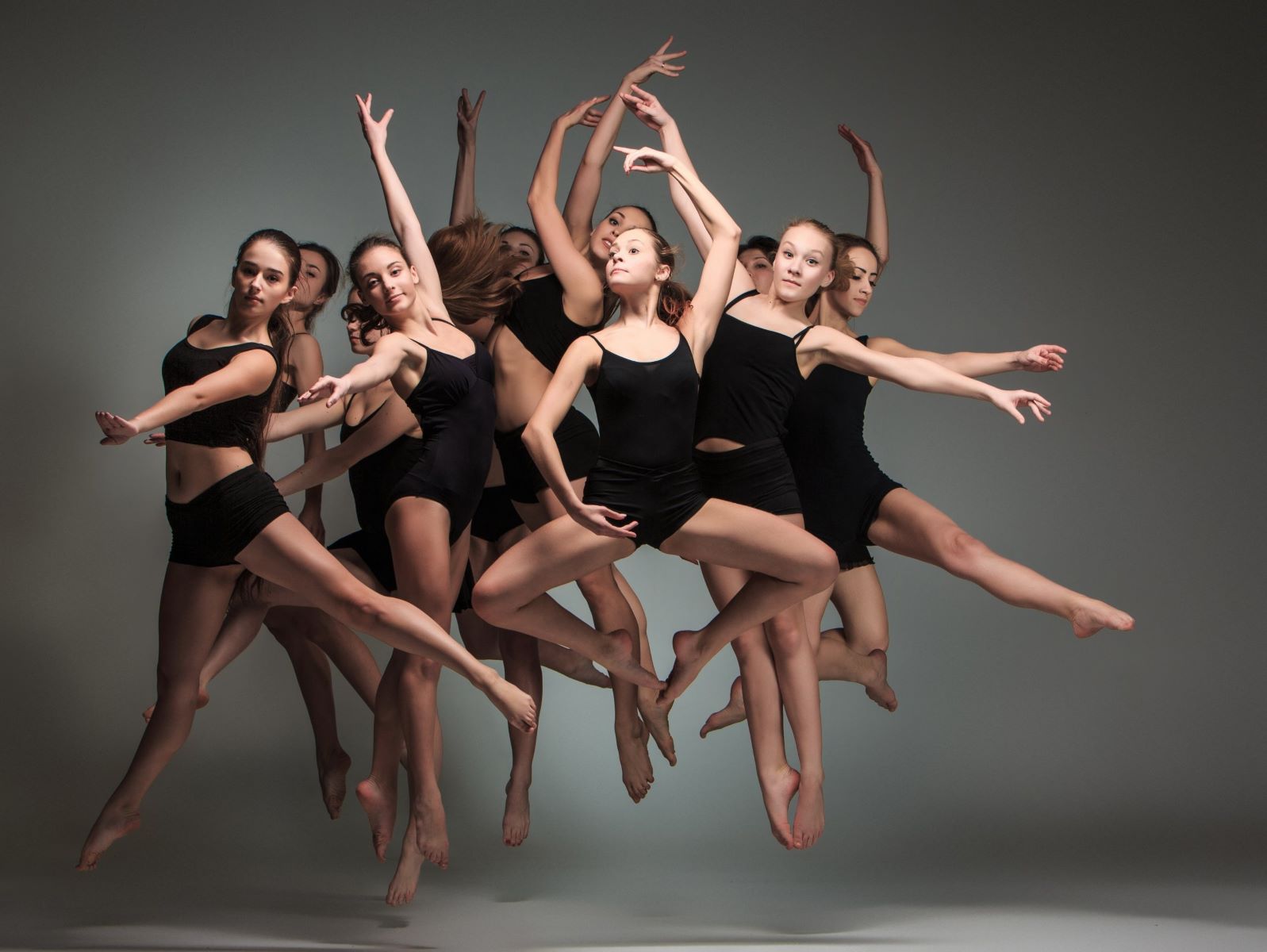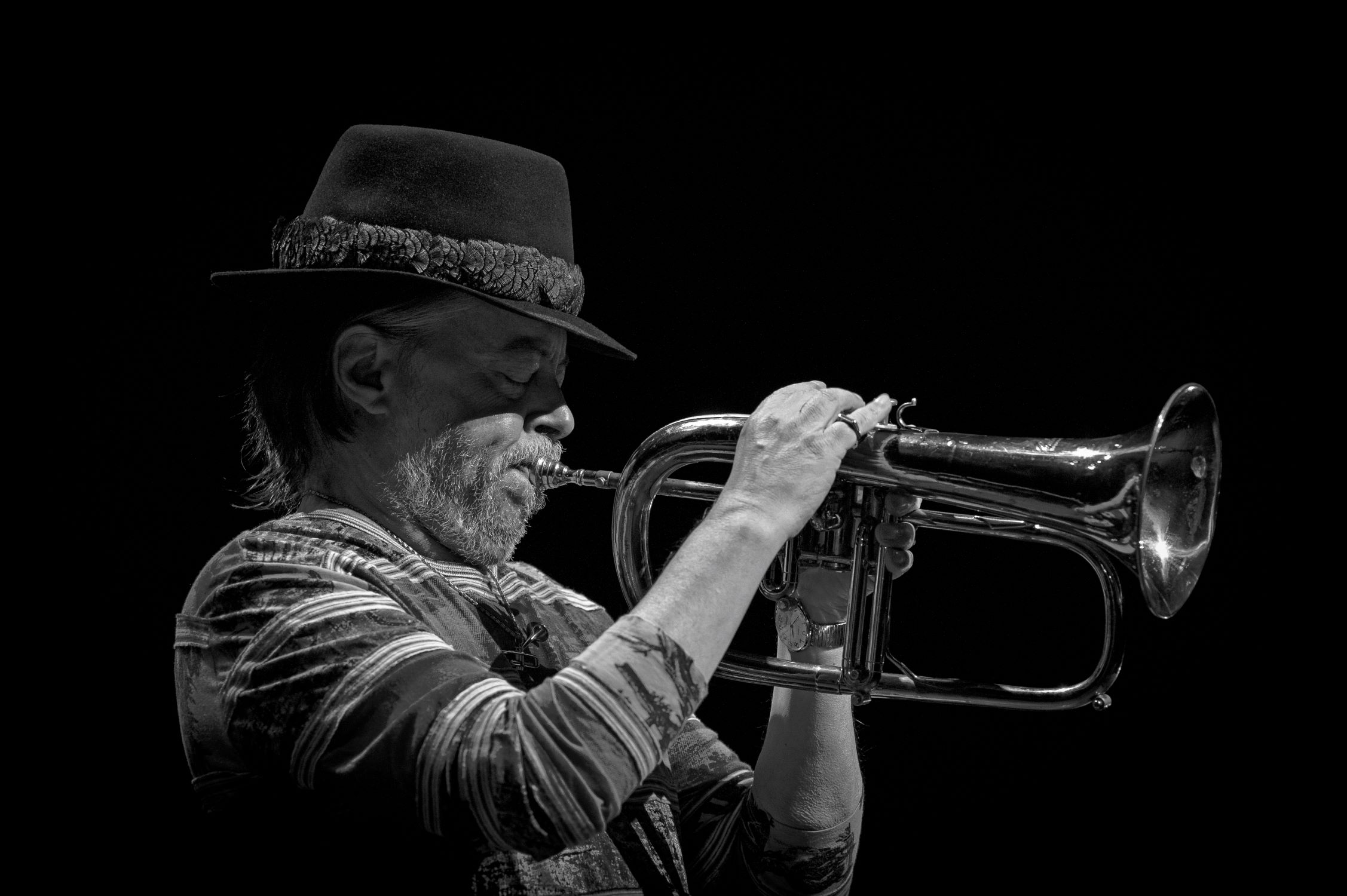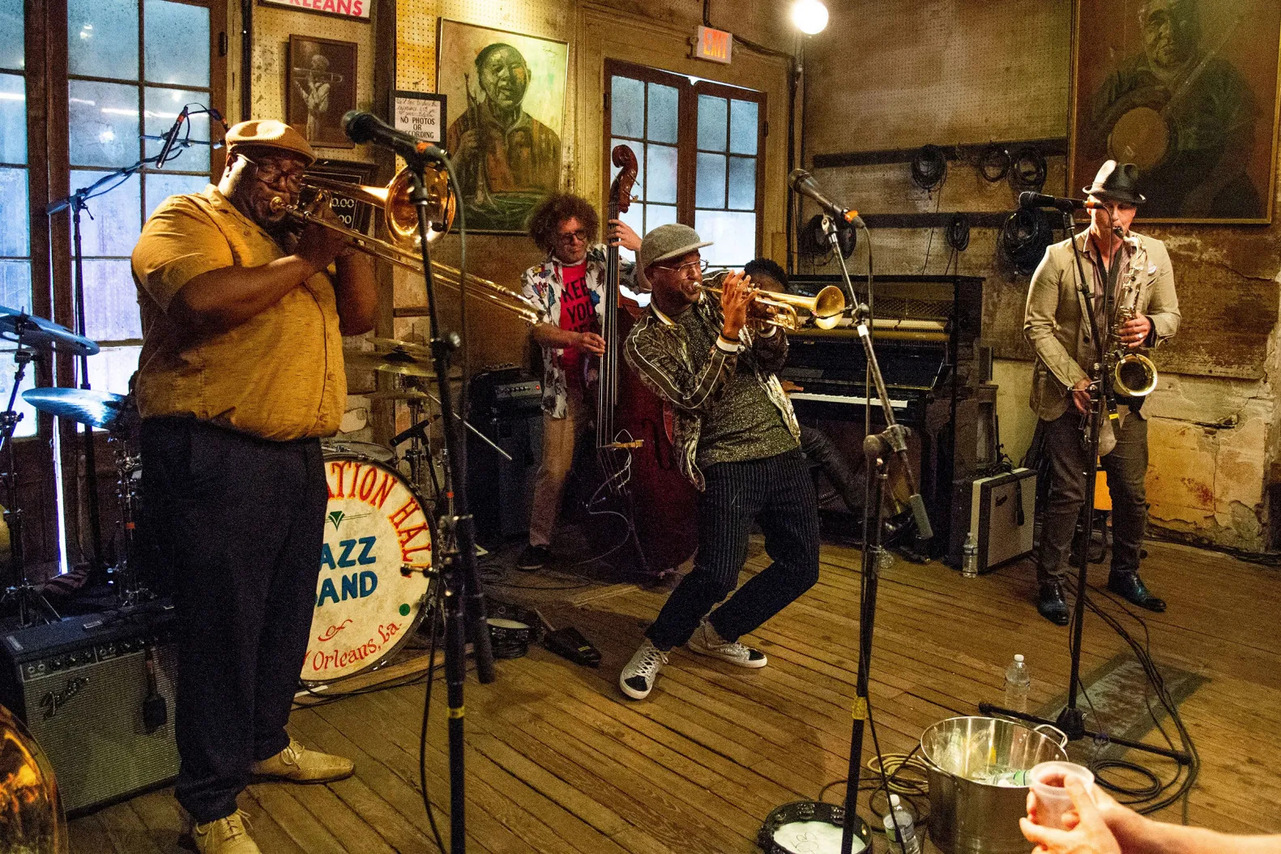

Jazz
What Is The Essence Of Jazz Music
Modified: January 22, 2024
Discover the essence of Jazz music - its origins, styles, and influence. Dive into the world of Jazz and experience the rhythmic melodies and improvisation that define this iconic genre.
(Many of the links in this article redirect to a specific reviewed product. Your purchase of these products through affiliate links helps to generate commission for AudioLover.com, at no extra cost. Learn more)
Table of Contents
Introduction
Jazz music is a vibrant and influential genre that has stood the test of time. Known for its distinctive rhythms, melodic improvisation, and rich harmonies, jazz has captured the hearts of music enthusiasts around the world. Its origins can be traced back to the early 20th century, when African American communities in New Orleans melded African musical traditions with European music styles. Over the years, jazz has evolved and branched out into various styles and subgenres, leaving an indelible mark on the music landscape.
What sets jazz apart from other genres is its emphasis on improvisation. Jazz musicians are skilled at spontaneous creation, seamlessly weaving in their unique musical ideas and interpretations into their performances. This element of improvisation allows for endless possibilities and the freedom of expression, making each jazz performance a one-of-a-kind experience.
The impact of jazz extends beyond just the music world. It has played a significant role in shaping and reflecting social and cultural movements throughout history. Jazz became the voice of African American communities during the civil rights movement, capturing the struggle for equality and justice. It also became a symbol of cultural exchange and artistic freedom, transcending geographical boundaries and influencing musicians around the globe.
In this article, we will delve into the essence of jazz music, exploring its origins, characteristics, notable musicians, and its profound impact on society. So grab a cup of coffee, sit back, and let’s embark on a journey through the captivating and soulful realm of jazz.
Origins of Jazz
The origins of jazz can be traced back to the early 20th century in the vibrant city of New Orleans, Louisiana. A melting pot of cultures and musical traditions, New Orleans became the birthplace of this electrifying genre. Drawing influences from African rhythms, European classical music, marching bands, and blues, jazz emerged as a unique and dynamic form of musical expression.
One of the key elements that shaped the early development of jazz was the fusion of African musical traditions with European instrumentation and harmony. African slaves brought with them a rich musical heritage, characterized by complex rhythms and call-and-response patterns. These elements blended with European instruments like the trumpet, clarinet, piano, and drums, giving birth to a new and distinctive sound.
Another crucial factor in the formation of jazz was the social and cultural environment of New Orleans. The city’s diverse population, comprising African Americans, African Creoles, European immigrants, and Native Americans, created a fertile ground for musical collaboration and cross-pollination. Musicians from different backgrounds came together in bars, dance halls, and street parades, sharing their musical ideas and creating a vibrant musical community.
As the popularity of jazz grew, it spread beyond the borders of New Orleans and gained recognition across the United States. Jazz bands traveled along riverboats, performing in cities like Chicago and New York, introducing the genre to new audiences. The migration of African Americans from the South to cities in the North also played a role in spreading the influence of jazz.
Notable figures like Louis Armstrong, Jelly Roll Morton, and Sidney Bechet emerged during this time, with their innovative playing styles and improvisational skills further propelling the growth of jazz. With its infectious rhythms, soulful melodies, and expressive improvisation, jazz captivated listeners and became a symbol of American culture.
The origins of jazz are rooted in the struggles and triumphs of African American communities in the early 20th century. It served as a vehicle for creative expression and a means of asserting cultural identity in a society marked by racial segregation. The birthplace of jazz, New Orleans, holds a special place in its history, and its vibrant musical legacy continues to inspire musicians and audiences alike.
Characteristics of Jazz Music
Jazz music is characterized by a unique set of musical elements that distinguish it from other genres. Its dynamic and improvisational nature sets it apart, creating a sense of spontaneity and creativity. Here are some key characteristics of jazz music:
- Syncopation: Jazz is known for its syncopated rhythms, where accents are placed on weak beats or off-beats. This rhythmic technique adds a sense of swing and vitality to the music, creating a distinct groove.
- Swing: Swing is an essential aspect of jazz music, with its infectious, propulsive feel. It refers to the rhythmic flow and forward propulsion created by emphasizing the off-beats, giving the music a pulsating and lively quality.
- Improvisation: Perhaps one of the most defining characteristics of jazz is improvisation. Jazz musicians excel at spontaneous composition, creating melodies and solos on the spot. This element allows for personal expression, individual style, and a constant sense of surprise and innovation in performances.
- Harmony and Chord Progressions: Jazz uses complex harmonic structures, often involving extended chords and chord progressions. Musicians explore varied harmonic possibilities, adding colorful and rich harmonies to their compositions and improvisations.
- Call and Response: Jazz music often incorporates call and response patterns, deriving from African musical traditions. It involves a musical dialogue between different instruments or between a soloist and the ensemble, creating a conversational and interactive aspect in the music.
- Blue Notes: Blue notes are an essential component of jazz, adding an expressive and soulful quality to the music. These notes are created by bending or sliding pitches, evoking a sense of melancholy and emotional depth.
Additionally, jazz encompasses a wide range of styles and subgenres, each with its own unique characteristics. These include traditional jazz, swing, bebop, cool jazz, fusion, and many more. Each style brings its own elements and influences, reflecting the evolution and diversity of jazz.
Overall, jazz music is a dynamic and expressive genre, marked by syncopated rhythms, improvisation, and a distinct sense of swing. Its rich harmonic structures and melodic invention provide a canvas for musicians to showcase their creativity and individuality. Jazz continues to inspire and captivate listeners with its timeless and innovative approach to music-making.
Improvisation in Jazz
One of the defining features of jazz music is its emphasis on improvisation. Improvisation is the art of creating music spontaneously, in the moment, without pre-planned compositions or arrangements. It is a crucial aspect of jazz that sets it apart from other music genres and allows for endless possibilities of musical expression.
In jazz, improvisation serves as a means of personal and collective expression. Jazz musicians use their technical skills, knowledge of scales and chords, and their creative instincts to create melodies, harmonies, and rhythms on the spot. This process often involves responding to the music being played by other musicians in real-time, engaging in a musical dialogue or conversation.
Improvisation in jazz can take various forms. Melodic improvisation involves creating new melodies or variations on existing melodies, often embellishing them with ornaments, slides, or other expressive techniques. Harmonic improvisation involves exploring different chord progressions, altering the underlying harmonies of a song, or adding extended chords and substitutions.
Rhythmically, improvisation in jazz allows musicians to experiment with different rhythmic patterns, syncopations, and accents. This adds a sense of groove and swing to the music, creating an infectious energy that engages both the musicians and the audience.
Improvisation in jazz requires a deep understanding of music theory, as well as familiarity with the genre’s specific harmonic and melodic conventions. Jazz musicians develop their improvisational skills through years of practice, listening to recordings of jazz greats, and performing with fellow musicians.
In a jazz ensemble, improvisation is not limited to the soloist. Each member of the band has the opportunity to contribute their own creative ideas, whether it’s through soloing, providing accompaniment, or engaging in spontaneous interactions with other musicians. This collective improvisation adds an element of dialogue and collaboration, creating a truly unique and dynamic musical experience.
Improvisation in jazz is a reflection of the performer’s personality, emotions, and musical sensibilities. It allows musicians to express themselves freely and authentically, offering a glimpse into their individuality and artistic voice.
Ultimately, it is the element of improvisation that gives jazz its magic and makes each performance a one-of-a-kind experience. It is the art of creating music in the moment, responding to the musical environment, and embracing the unexpected. Jazz improvisation embodies the spirit of spontaneity, creativity, and freedom, making it a vital and exhilarating aspect of the genre.
Influence of Jazz on Other Music Genres
Jazz is a genre that has had a profound impact on the development of various music genres throughout history. Its innovative and expressive nature has influenced musicians across different styles and time periods. Here are some notable genres that have been shaped by the influence of jazz:
- Bebop: Bebop emerged in the 1940s as a response to the commercialization of swing music. Influenced by jazz luminaries like Charlie Parker and Dizzy Gillespie, bebop emphasized complex harmony, fast tempos, and intricate improvisation. It laid the foundation for modern jazz and influenced subsequent styles like hard bop and cool jazz.
- Modal Jazz: Modal jazz, popularized by musicians like Miles Davis and John Coltrane in the 1950s and 1960s, is characterized by a focus on modes rather than traditional chord progressions. This approach to harmony and improvisation provided a departure from the traditional jazz standards and created a freer, more open-ended musical landscape.
- Fusion: Fusion, also known as jazz-rock fusion, emerged in the late 1960s and combined elements of jazz improvisation with the power and energy of rock music. Fusion artists like Miles Davis, Weather Report, and Herbie Hancock incorporated electric instruments, rock rhythms, and synthesizers, creating a genre that blurred the boundaries between jazz and rock.
- Latin Jazz: Latin jazz emerged in the mid-20th century as a fusion of jazz and Latin American rhythms and instrumentation. Artists like Tito Puente and Dizzy Gillespie incorporated Afro-Cuban, Brazilian, and other Latin American musical elements into their jazz compositions, creating a vibrant and rhythmic genre that continues to thrive today.
- Hip Hop and R&B: Jazz has had a significant influence on the development of hip hop and R&B music. Borrowing from the improvisational nature of jazz, hip hop producers and artists sample jazz records and incorporate jazz-inspired elements into their beats and compositions. R&B artists also draw on jazz harmonies and melodic phrasing to create a unique blend of genres.
- Contemporary Pop and Neo-Soul: Jazz has left an indelible mark on contemporary pop music and neo-soul. Artists like Amy Winehouse, Norah Jones, and John Legend incorporate jazz-inspired elements like sophisticated harmonies, soulful vocal stylings, and improvisation, infusing their music with a timeless and sophisticated quality.
The influence of jazz on other genres is vast and continues to evolve with each new generation of musicians. Whether it’s the complex harmonies, improvisational spirit, or rhythmic innovations, jazz has provided a foundation for experimentation and artistic exploration in music.
Jazz’s influence extends beyond just the musical aspects. Its rich history, association with cultural movements, and its role as a symbol of freedom and individuality have inspired artists from all walks of life. Jazz continues to serve as a source of inspiration, pushing the boundaries of music and opening doors to new possibilities.
Notable Jazz Musicians
Jazz has been home to countless virtuosic and influential musicians throughout its history. These artists have left an indelible mark on the genre, shaping its development and pushing the boundaries of musical possibility. Here are just a few of the notable jazz musicians who have made significant contributions:
- Louis Armstrong: Known as the “Father of Jazz,” Louis Armstrong’s innovative trumpet playing and soulful vocals helped define jazz in its early years. With his distinctive gravelly voice and expressive playing style, Armstrong became one of the genre’s most beloved and influential figures.
- Miles Davis: Miles Davis was a trailblazing musician and bandleader who consistently pushed the boundaries of jazz. From his influential work in bebop and modal jazz to his groundbreaking fusion experiments, Davis’ visionary approach to music left an indelible mark on the genre.
- Ella Fitzgerald: Ella Fitzgerald’s unparalleled vocal talent and improvisational skills made her one of the most iconic jazz singers of all time. Her ability to scat and effortlessly navigate complex melodies earned her the title of the “First Lady of Song.”
- Charlie Parker: Known as “Bird,” Charlie Parker was a legendary saxophonist and composer who revolutionized jazz with his virtuosic and innovative improvisations. Considered one of the greatest improvisers in jazz history, Parker’s contributions to bebop helped shape the course of the genre.
- John Coltrane: John Coltrane’s innovative and spiritually-driven approach to playing the saxophone had a profound influence on jazz. With his groundbreaking albums like “A Love Supreme,” Coltrane pushed the boundaries of harmony, form, and expression, leaving a lasting impact on the genre.
- Nina Simone: Nina Simone was not only a remarkable singer but also a gifted pianist and composer. Her powerful and emotive voice, coupled with her jazz and classical influences, made her a force to be reckoned with in the jazz world.
- Thelonious Monk: Thelonious Monk was a pianist and composer known for his idiosyncratic and innovative playing style. His compositions, such as “Round Midnight” and “Blue Monk,” have become jazz standards, and his unique approach to harmony continues to inspire musicians to this day.
These are just a few of the many incredible jazz musicians who have shaped the genre. From instrumental virtuosos to mesmerizing vocalists, these artists have made jazz what it is today – a dynamic and ever-evolving art form that continues to captivate audiences worldwide.
Evolution and Development of Jazz
Jazz is a genre that has evolved and developed over the course of more than a century. From its humble beginnings in New Orleans to its global recognition and influence, jazz has continuously pushed the boundaries of music and embraced new styles and innovations.
The early years of jazz saw the emergence of iconic styles such as ragtime and Dixieland. Ragtime, popularized by musicians like Scott Joplin, was characterized by its syncopated rhythms and vibrant piano melodies. Dixieland, on the other hand, featured lively ensemble playing with improvisation at its core.
In the 1920s, the era of the “Jazz Age,” jazz reached new heights of popularity. The advent of recording technology allowed jazz to spread beyond its birthplace in New Orleans and reach a wider audience. It was during this time that the iconic big bands of the swing era, led by musicians like Duke Ellington and Count Basie, rose to prominence. Swing music, with its infectious rhythms and catchy melodies, became the soundtrack of a generation.
As the 1940s rolled around, a new style of jazz known as bebop emerged. Bebop, pioneered by artists like Charlie Parker and Dizzy Gillespie, was characterized by its complex harmonies, fast tempos, and intricate improvisation. This style marked a departure from the more accessible and danceable swing music of the previous decade, placing greater emphasis on virtuosity and musical expression.
The 1950s and 1960s witnessed the rise of modal jazz and free jazz. Modal jazz, popularized by Miles Davis in albums like “Kind of Blue,” focused on the exploration of musical modes rather than traditional chord progressions. Free jazz, associated with musicians like Ornette Coleman and John Coltrane, pushed the boundaries of improvisation, embracing unconventional harmonies, extended techniques, and unstructured improvisational forms.
In the 1970s and beyond, jazz continued to evolve and incorporate elements from various other genres. Fusion emerged as a popular style, blending jazz with elements of rock, funk, and electronic music. Innovators like Weather Report, Herbie Hancock, and Chick Corea embraced electric instruments and experimental production techniques, creating a fusion of styles that attracted a new audience.
Contemporary jazz is a diverse and vibrant realm, featuring a wide range of styles and subgenres. From smooth jazz and acid jazz to Latin jazz and avant-garde, jazz continues to push boundaries and evolve with each passing era.
The development of jazz owes much to the creativity and innovation of its musicians. From Louis Armstrong and Ella Fitzgerald to modern-day pioneers like Esperanza Spalding and Kamasi Washington, jazz remains a genre that embraces experimentation, cultural fusion, and musical exploration.
As jazz continues to evolve in the 21st century, it carries with it a rich history and a legacy of artistic excellence. Whether it’s through traditional forms or groundbreaking experiments, jazz remains a genre that captivates and inspires, constantly reinventing itself while honoring its roots.
Jazz Styles and Subgenres
Jazz is a genre that encompasses a wide range of styles and subgenres, each with its own distinct characteristics and influences. From the swinging rhythms of traditional jazz to the experimental sounds of avant-garde, jazz offers a diverse and ever-evolving musical landscape. Here are some of the notable jazz styles and subgenres:
- Traditional Jazz: Often referred to as Dixieland or New Orleans jazz, traditional jazz draws its roots from the early jazz styles developed in New Orleans in the early 20th century. It features collective improvisation and lively ensemble playing, with influences from ragtime and blues.
- Swing: Swing emerged in the 1930s and 1940s as the dominant style of jazz. It is characterized by its propulsive rhythm, big band arrangements, and memorable melodies. Swing music was popularized by artists like Duke Ellington, Count Basie, and Benny Goodman.
- Bebop: Bebop, also known as “bop,” emerged in the 1940s as a response to the commercialization of swing music. Artists like Charlie Parker and Dizzy Gillespie pioneered this style, featuring fast tempos, complex harmonies, and intricate improvisation.
- Cool Jazz: Cool jazz emerged in the late 1940s and 1950s as a more relaxed and subdued alternative to bebop. It often features intricate arrangements, smooth melodies, and a focus on subtle nuances. Notable cool jazz artists include Miles Davis and Dave Brubeck.
- Hard Bop: Hard bop evolved in the 1950s and blended elements of bebop, blues, and gospel music. It emphasized a more soulful and emotional approach to improvisation, often featuring heavy use of blues scales and driving rhythms.
- Modal Jazz: Modal jazz gained popularity in the 1950s and 1960s, led by artists like Miles Davis and John Coltrane. It moved away from traditional chord progressions and focused on exploring musical modes, creating a more open and spacious sound.
- Free Jazz: Free jazz emerged in the 1960s as a departure from traditional jazz conventions. It pushed the boundaries of improvisation, embracing a more experimental and avant-garde approach. Artists like Ornette Coleman and John Coltrane were influential figures in this style.
- Fusion: Fusion emerged in the late 1960s and combined elements of jazz with rock, funk, and electronic music. It incorporated electric instruments and explored new production techniques, creating a genre that blurred the boundaries between jazz and other styles. Artists like Miles Davis, Weather Report, and Herbie Hancock were pioneers of fusion.
- Latin Jazz: Latin jazz combines jazz with the rhythmic and melodic elements of Afro-Cuban and Latin American music. It often features syncopated rhythms, lively percussion, and improvisation. Notable Latin jazz artists include Tito Puente, Machito, and Chucho Valdés.
These are just a few of the many jazz styles and subgenres that have emerged throughout the genre’s history. Each style brings its own unique blend of influences, techniques, and aesthetics, adding to the rich tapestry of jazz music.
From the traditional sounds of New Orleans to the cutting-edge experiments of contemporary jazz, the wide array of jazz styles and subgenres ensures that there is something to appeal to every listener’s taste. Jazz continues to evolve and push boundaries, embracing new influences while honoring its rich heritage.
Impact of Jazz on Society
Jazz has had a profound impact on society, transcending its role as a mere genre of music. From its roots in African American communities to becoming a global cultural phenomenon, jazz has played a significant role in shaping social, cultural, and even political movements. Here are some key ways in which jazz has impacted society:
Breaking Racial Barriers: Jazz emerged and flourished during a time of racial segregation and discrimination in the United States. However, jazz served as a catalyst for breaking down racial barriers, as it brought together musicians and audiences from different racial and cultural backgrounds. Jazz clubs became spaces of integration and artistic collaboration, providing opportunities for African American musicians to showcase their talent and influence a wide audience.
Cultural Exchange and Diplomacy: Jazz became an important vehicle for cultural exchange and diplomacy during the mid-20th century. In the 1950s and 1960s, the U.S. State Department launched initiatives like the Jazz Ambassadors program, sending jazz musicians on international tours to promote American values and encourage cultural dialogue during the Cold War. Jazz became a symbol of American democracy and individual freedom, influencing musicians and audiences around the world.
Expression of Social and Political Movements: Jazz has often served as a creative expression of social and political movements. During the civil rights movement in the United States, jazz musicians used their music to voice the struggle for equality and justice. Songs like “Strange Fruit” by Billie Holiday, which addressed the horrors of racism, became powerful anthems that galvanized the movement and raised awareness about the plight of African Americans.
Innovation and Musical Revolution: Jazz has been a breeding ground for innovation and musical revolution. Throughout its history, jazz has continuously pushed the boundaries of musical expression, redefining traditional notions of harmony, rhythm, and improvisation. This spirit of experimentation and artistic freedom has influenced musicians in various genres, inspiring them to explore new musical territory and embrace their own creative instincts.
Legacy of Artistic Excellence: The impact of jazz can be seen through its rich legacy of artistic excellence. Jazz has produced a wealth of renowned and influential musicians whose contributions continue to inspire and shape the music world. The innovations of artists like Louis Armstrong, Duke Ellington, and Miles Davis have left an indelible mark on jazz and influenced generations of musicians who followed in their footsteps.
Overall, jazz has transcended its role as a genre of music, becoming a cultural force that has shaped societies around the world. Its embrace of cultural diversity, its role in breaking down racial barriers, and its ability to express social and political movements have made jazz a powerful tool for unity, cultural exchange, and creative expression. Jazz’s impact on society continues to resonate and inspire new generations of musicians and music enthusiasts.
Conclusion
Jazz is an extraordinary genre that has captivated audiences for over a century. Its origins in African American communities, its evolution through various styles and subgenres, and its profound impact on society have solidified its status as one of the most influential and celebrated forms of music.
From its rhythmic complexities and syncopated beats to its emphasis on improvisation and creative expression, jazz continues to push the boundaries of musical innovation. It has served as a platform for cultural exchange, breaking down racial barriers, and fostering unity through the power of music.
Jazz has left an indelible mark on other music genres, influencing the development and evolution of styles such as bebop, fusion, and Latin jazz. Its rich legacy can be seen in the virtuosic playing, expressive singing, and groundbreaking compositions of jazz legends like Louis Armstrong, Miles Davis, and Ella Fitzgerald, who continue to inspire new generations of musicians.
Beyond its musical contributions, jazz has impacted society by becoming a voice for social and political movements. It has provided a means of expressing the struggles for equality and justice, and has served as a symbol of cultural and artistic freedom.
In conclusion, jazz is more than just music. It represents a cultural phenomenon, a testament to the power of creativity and human connection. Whether it’s the soulful melodies of a ballad or the pulsating rhythms of a bebop solo, jazz has the ability to move and inspire listeners, transcending language and cultural barriers.
So, the next time you sit back and listen to the mesmerizing sounds of a jazz composition or witness the spontaneous magic of a live jazz performance, appreciate the profound influence it has had on music and society as a whole. Jazz truly embodies the essence of a genre that celebrates freedom, individuality, and artistic expression, making it a timeless treasure that will continue to resonate for generations to come.

